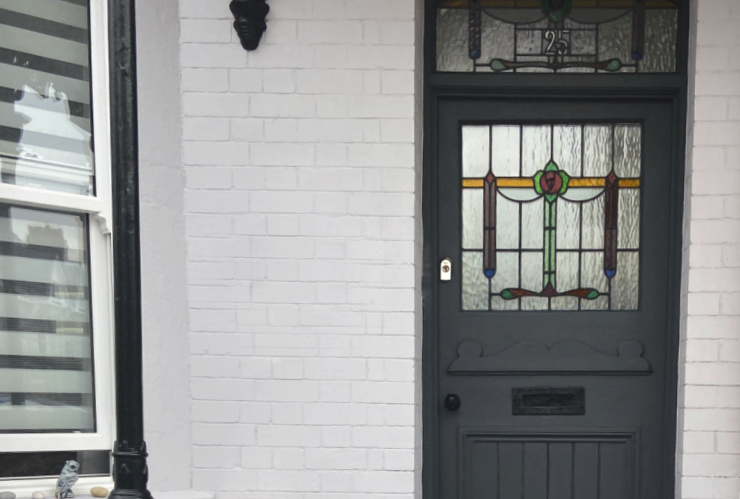Setting up a business requires a lot of outgoing expenditure, the biggest of which will probably come from buying or leasing a property. Whether you’re opening a café, hotel, book shop or cinema, finding a home base is paramount.
The question is, what sort of properties are out there for your needs?
In this article, I’ll be taking you through the types of commercial properties so you can get started with your commercial property conveyancing. The sooner this big decision is made, the sooner your business can be properly set up! So, let’s get cracking.
What is Commercial Property?
What is Commercial Property?
A commercial property, also known as commercial real estate, is a building or piece of land intended to generate profit. The property will usually be used for industrial purposes, but can include residential property, depending on the purpose and size of it. If you're looking for commercial property for sale in Hull, or local to you, understanding the different types of commercial real estate and their potential uses can help you make an informed investment decision.
Commercial Property Classifications
The Town and Country Planning Order of 1987 determine how commercial real estate is used, and what types it falls under. In order to determine this, they have a series of “use classes” which help to define things better.
Any property used for commercial purposes must adhere to the planning regulations within the order, or fines might be implemented. So, if you wish to renovate your property or change its usage, you need to make sure it complies with planning. Ultimately, this:
Enables planners in the area to ensure their area doesn’t include certain property types to avoid complaints, for example, no pubs;
It identifies what types of businesses can or can’t move into these areas.
10 Types of Commercial Property
Now that we know a bit more about what commercial property is and how it’s separated, here are the 10 types of commercial real estate you should be aware of:
Office Buildings
Office buildings are the first type we’ll be discussing. They’ll be used for general office work, as well as research and development studios in either urban or suburban areas. Office buildings are distributed into three different classes, which are:
- Class A: The building will be very prestigious, so rents will be above average for the area. Systems and services will be very high-end, giving the business a high presence; perfect for customer-facing jobs for high-profile clients.
- Class B: This will be perfect for a wide range of companies with an array of budgets. The prices will usually match the averages in the area, and the building finishes will be fit for the purpose.
- Class C: usually for start-ups, housing small businesses who need a functional space with a below-average rent.
Retail includes any commercial business that sells anything other than hot food on its premises. This is a huge industry, which includes a massive array of different business types, including, but not limited to:
- Post office
- Cold food vendors
- Supermarkets
- Clothes stores
- Beauty parlours
- Hairdressers
- Funeral parlours
- Car wash
- Petrol station
- Shopping centres
- Malls
- Nail salon
- Drug stores
Within these larger malls, there will usually be an anchor tenant, or multiple anchor tenants, to draw people in. For example, many have a big supermarket chain situated within the mall to draw customers into the smaller shops.
Industrial
The industrial property sector typically involves large warehouses, which can be outfitted with machinery and shelving units to meet specific business requirements. These buildings may be used for manufacturing, assembly, storage, and distribution, such as wholesale warehouses. They’re usually located outside urban areas, near major travel routes, and often within large business parks. If you're in need of space, there are the availability of commercial warehouses for rent and can be tailored to suit your business needs and operations.
Leisure
Leisure properties encompass a huge array of different types of businesses and usually revolve around the entertainment industry. Some ideas that may be included within this type of commercial property include cinemas, skating rinks, gyms, bingo halls, swimming pools, and more.
Food and Drink
The thriving food and drink sector includes a number of different vicinities. Be it a pub, a restaurant, a coffee shop, a wine bar, or a café, they all apply.
This sector also includes takeaway services. As long as hot food and drink is served on the premises, even if it leaves the premises to be consumed, it’s all part of this commercial sector.
Hotels
The hotel industry -- although currently struggling due to COVID-19 -- was previously thriving and will thrive again at some point, especially if resorts to using an effective online hotel management system to streamline all operations. It’s a broad sector, including hotels of different types. These are:
- Limited service: no room service, on-site restaurant, or concierge.
- Full-service: does have all of the above and is usually a big-name hotel.
- Boutique: an urban or resort location, with full service, but few rooms. Not part of a national chain.
- Casino: a hotel with some sort of gaming component, like an arcade or slot machine.
- Extended stay: limited service, with large rooms, sometimes with kitchens, for longer stays.
- Resort: a large area with attached amusement facilities, like a golfing range.
Any investment properties on undeveloped rural land also falls into this type of real estate. These sorts of buildings offer lots of opportunities for future development, especially with land diversification being a popular choice for many farmers these days.
The opportunities of this land to become a staycation destination, a farm café, a spa, an adventure park, or anything else in between, means lots of profit can be made. These sorts of land fall into three different categories, including:
- Greenfield land: undeveloped farm or pasture land, like a field, ranch or orchard.
- Infill land: land in a city area that has already been developed, but is vacant.
- Brownfield land: parcels of land which were previously used for industrial purposes, but are now open to use for other purposes.
As we’ve seen, the definition of commercial property is land intended to generate profit. With this in mind, residential property greater than a certain number of units also qualifies as commercial. This is the case due to borrowing or tax purposes; it simply isn’t the same as buying a residential home.
In general, this type of real estate includes residential real estate outside of one single family, such as:
- Apartments and condos
- Co-ops, which are businesses owned by a democracy of people striving towards a common goal
- Townhomes, which are old aristocratic buildings which generate income, often through apartments within
- High-rises, which include buildings of nine or more floors and at least one elevator
- Mid-rises, usually multistorey buildings found in urban areas with an elevator
- Walk-ups, which are buildings of up to six storeys, without an elevator
- Garden-style properties, which are one to three-storey apartments in a rural/garden-like setting
- Special-purpose housing, for example, student housing, care homes, or subsidised homes in low-income areas
These buildings will involve a huge number of different uses, usually with a community in mind. Some might include:
- Banks
- Creches
- Churches
- Community halls
- Libraries
- Art galleries
- Museums
- Clinics
- Nurseries
- Schools
- Health centres
These days, some buildings may be put to maximum use through being built for multiple purposes. For example, a hotel, office building, retail store or apartment building with a café or restaurant underneath is pretty common. This is a great way to make a bit of extra money through capitalising on the general needs of those using the building.
Ready to Buy Your Commercial Property?
Hopefully, this article has given you an insight into what to expect from this large sector of real estate. Don’t forget to get in touch with a conveyancing solicitor to help you with your final decision.













































